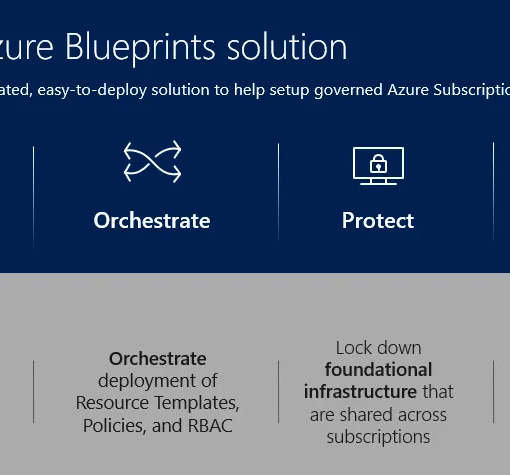Updated – April 2024

Azure Front Door is a global, scalable, and secure entry point for delivering high-performance web applications. It acts as a Layer 7 load balancer that provides advanced traffic management, security features, and performance optimization. This guide will cover the core features, benefits, and a detailed use case demonstrating Azure Front Door in action.
Core Features of Azure Front Door
- Global Load Balancing
- SSL Termination
- URL-based Routing
- Web Application Firewall (WAF)
- Caching and Compression
- Traffic Acceleration
- Custom Domain and HTTPS Support
- Health Probes and Monitoring
1. Global Load Balancing
Azure Front Door distributes incoming network traffic across multiple backend services in different regions. This ensures low-latency access and high availability for users around the globe. Here are some noteworthy benefits:
- Geographic Proximity Routing: Directs users to the nearest backend service based on geographic location.
- Automatic Failover: Redirects traffic to healthy endpoints in case of regional failures.
- Session Affinity: Maintains user sessions across multiple requests.
2. SSL Termination
Azure Front Door offloads SSL/TLS processing from backend services, which reduces the computational load on these services and improves performance. main features include:
- SSL Offloading: Terminates SSL connections at the edge, reducing latency and server load.
- Custom SSL Certificates: Supports custom SSL certificates for secure communication.
3. URL-based Routing
Azure Front Door provides advanced routing capabilities based on URL paths, enabling precise control over traffic distribution. you can do the following the URL based on routing:
- Path-based Routing: Routes requests to different backend pools based on URL paths.
- Host-based Routing: Routes traffic based on the host header.
4. Web Application Firewall (WAF)
The built-in Web Application Firewall in Azure Front Door protects web applications from common threats and vulnerabilities. which provides Threat Protection to guard against SQL injection, cross-site scripting (XSS), and other common attacks you can also set Custom Rules to Allow the creation of custom security rules tailored to specific application needs.
5. Caching and Compression
Azure Front Door enhances performance by caching static content at edge locations and compressing responses. main features include:

- Edge Caching: Reduces latency by serving cached content from edge locations.
- Content Compression: Decreases response sizes, speeding up content delivery.
6. Traffic Acceleration
Azure Front Door optimizes traffic flow using features like TCP and HTTP/2 multiplexing, which reduce latency and improve the user experience. you can achieve:
- HTTP/2 Support: Improves performance with multiplexed connections.
- TCP Optimization: Enhances data transfer efficiency.
7. Custom Domain and HTTPS Support
Azure Front Door supports custom domains and HTTPS for secure and branded user experiences. with
8. Health Probes and Monitoring
Azure Front Door continually monitors the health of backend services and routes traffic only to healthy instances.
Use Case: Global E-Commerce Platform
Company Overview:
A global e-commerce company needs to ensure its website is fast, secure, and reliable for customers worldwide. They want to handle web traffic efficiently, protect against cyber threats, and ensure quick load times regardless of customer location.
Challenges:
- Global Presence: Providing a consistent shopping experience for customers across different continents.
- Security: Protecting the website from common web vulnerabilities and attacks.
- Performance: Ensuring fast load times and low latency for users around the globe.
- Availability: Maintaining high availability even during regional failures.
Solution Using Azure Front Door:
Global Load Balancing: The company deploys Azure Front Door to distribute traffic across backend services hosted in multiple Azure regions (e.g., North America, Europe, Asia). Geographic proximity routing ensures customers are directed to the nearest region, reducing latency.
SSL Termination: SSL termination at the edge offloads the computational load from backend services. The company uses custom SSL certificates for secure connections, improving overall performance.
URL-based Routing: Path-based routing directs traffic to specific backend pools based on URL paths. For example, API requests are routed to API servers, while web content requests are routed to web servers.
Web Application Firewall (WAF): The built-in WAF protects the e-commerce website from common threats like SQL injection and cross-site scripting. Custom rules are implemented to address the specific security needs of the platform.
Caching and Compression: Static content, such as product images and CSS files, is cached at edge locations, reducing load times. Content compression further speeds up data transfer, enhancing the user experience.
Traffic Acceleration: With support for HTTP/2 and TCP optimization, Azure Front Door accelerates traffic flow, reducing latency and improving performance for end users.
Custom Domain and HTTPS Support: The company uses custom domains for a branded user experience and ensures all connections are secure with HTTPS.
Health Probes and Monitoring: Regular health probes monitor the status of backend services. In case of a failure, traffic is automatically redirected to healthy instances, ensuring high availability.
Outcome:
By leveraging Azure Front Door, the e-commerce company achieves a robust, high-performance, and secure web application. Customers enjoy a fast, reliable, and consistent shopping experience, leading to increased satisfaction and loyalty. The platform efficiently handles global traffic, provides robust security, and maintains high availability, even during regional outages.




